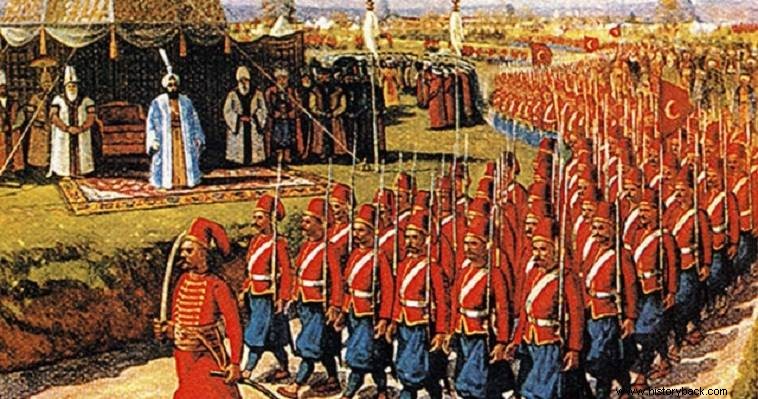 Contrary to the revolutionary Greeks, who saw the need to form a regular army, the Ottoman Empire, at the time of the Greek Revolution of 1821, did not have serious regular forces. Since 1790, Sultan Selim III had attempted to establish regular infantry, equivalent to the line divisions of the European forces.
Contrary to the revolutionary Greeks, who saw the need to form a regular army, the Ottoman Empire, at the time of the Greek Revolution of 1821, did not have serious regular forces. Since 1790, Sultan Selim III had attempted to establish regular infantry, equivalent to the line divisions of the European forces. But he was faced with the fierce reaction of the then military establishment of Constantinople and especially the janissaries. The latter, although they had now declined and had no connection with the old militant bodies, had great influence in Ottoman society, capable of defying the orders of the sultan himself.
Nevertheless, Selim proceeded to form a corps of regular infantry, the Nizam i Cedit (the Nizamis, as the Greeks called them). In this he enlisted a few thousand poor and unemployed idlers of Constantinople, under the guidance of foreign Russian and German mainly officers.
But the janissaries rebelled in 1807 and after decapitating the "Europeanist" sultan, they disbanded the regular corps. As a result, the Ottoman Empire found itself without an infantry equivalent to the European one. The Turks, including the janissaries and their other national soldiers, continued to fight with tactics that at best date back to the 17th century.
The infantry
In addition to the janissaries, the Turks in their struggle to suppress the Greek revolution used many thousands of "Segban". These men recruited mainly from Anatolia, constituted a kind of standing army, a militia. They were equipped with musket or bayonet, yatagani and pistols. They had no bayonets.
Badly trained and more accustomed to slaughtering civilians, they suffered severe defeats from the war-experienced disorderly Greek units. Of course the Segbans couldn't even stand up against a regular division. Like the janissaries, they advanced in groups (buluks) of 40-50 men, arranged in two yokes.
They would fire in pairs – like 17th-century European infantry – and try to get within striking distance of the enemy, at which point they would charge at him brandishing their yatagans and shouting “Allah, Allah”.
In addition to these there were also the provincial troops, comprising either the garrison of a region, or the mercenaries of a local pasha. These divisions were clearly more experienced than the "imperial" ones. But they were naughty and unruly. In their ranks were mainly Albanians, who fought in the same way as the Greek rioters.
Another body was that of the "Tufexides". They sometimes had horses to move faster. But they fought exclusively as light infantry in a strafing formation. They were mainly Kurds. The only regular divisions, again in the similar and only sense of the term, were those of the "Bostantzides" and the "Solaks".
The former were essentially an elite body of janissaries, carrying the same weaponry and having the same disadvantages as them. And the "Solaki" were nothing more than the sultan's guard, largely unarmed, with a special ability in palace intrigues. Finally, the infantry was supplemented by some irregular bodies of auxiliaries, armed with melee weapons, even with bows.
Horsemen and gunners
The Turkish cavalry, the once steadfast support of the empire, had also fallen. With the exception of the corps of "Slaves of the Gate" (Kapikoulos) all the rest of the cavalry was light and disorderly. The Kapikolou are considered a regular unit because they were paid by the Gate.
Otherwise their tactics and organization were also out of date. However, the bulk of the Turkish cavalry of the period was made up of the Spachis and Delis (the madmen). The Spachides were the remnant of the old feudal cavalry. They were woefully ill-equipped and capable only of raids and massacres of civilians.
The Delides were mainly Balkans, light acrobolous horsemen and quite experienced warriors. Well trained individually, they were not capable of fighting as a unit and could not withstand the fire of regular infantry. The artillery was the most valuable that the Ottoman army of the period had to present.
